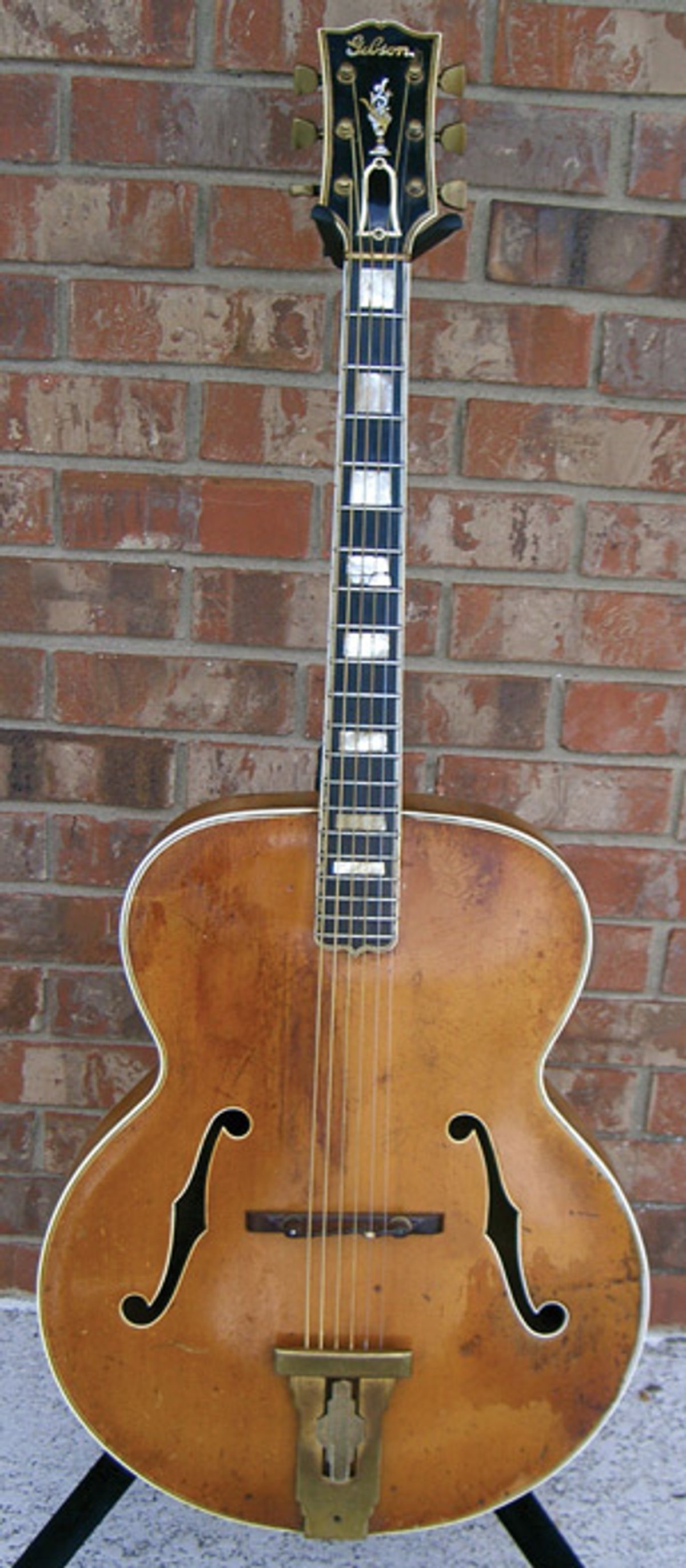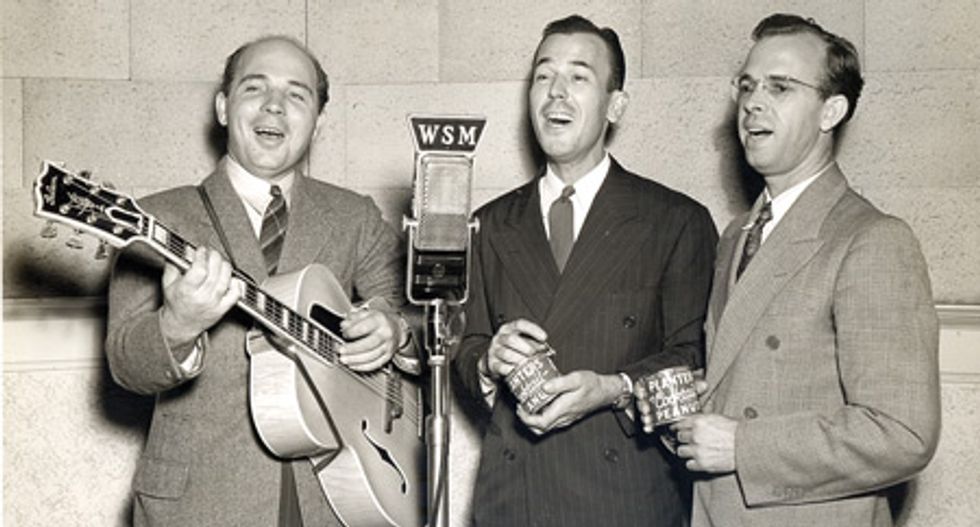
A vintage L-5 used on Hank Williams, Chet Atkins, and Patsy Cline albums.
This guitar has an unusually rich and significant
musical history. You heard it on Hank Williams’
“I’m So Lonesome I Could Cry,” “Lovesick
Blues,” and “Cold, Cold Heart.” It was used
to record “Blue Eyes Crying in the Rain,” one
of Chet Atkins’ earliest recordings for Bullet
Records. And it was featured all over Patsy
Cline’s debut album, Patsy Cline. It even
toured the Pacific with Frank Tennille—yes,
that Tennille’s father—and Bob Crosby’s band
during WWII. The battered and bruised guitar
showcased here is a 1938 Gibson L-5 used
extensively by Nashville session and radio guitarist
Jack Shook.
Shook was a pioneer of the Nashville session scene. He was one of the first to make playing the guitar in the studio—on both radio and record dates—a full-time and decent paying job. Besides having his mainstay gig as WSM’s acoustic guitarist—which included playing on the Grand Ole Opry weekly program—for 45 years, Shook used his L-5 in his singing group the Missouri Mountaineers, on the Teddy Bart Noon Show and countless other country recordings and radio programs. In addition to the aforementioned legends Shook worked with in the studio, he also recorded with Lester Flatt, Earl Scruggs, Hank Snow, Eddy Arnold, and Ray Price.
Shook’s L-5 has a carved spruce top complete with bound f-holes, carved figured-maple back and sides, a blonde finish, and multi-ply binding. The guitar features a figured maple neck—ebony necks were also available— that’s matched with a bound ebony fretboard. It has an adjustable ebony bridge and a gold-plated tailpiece with an engraved silver insert that was new to the model in 1937. The multi-bound blackface headstock sports a pearl flowerpot inlay and Grover Imperial tuners. The guitar was originally equipped with a raised multi-bound pickguard, but that became a casualty from years of radio gigs, studio sessions, and worldwide traveling.

As you can see, this L-5 has some unusual wear and tear above the low-E string. This looks similar to the wear pattern on some of Dave Matthews’ Taylor acoustics that’s caused by his unusually heavy upstrokes. To our knowledge, Shook wasn’t a heavy-handed picker, but instead this wear resulted from him playing the guitar upside down. Though his L-5 was strung up normally, Shook played his guitar left-handed (as shown above).
A special thanks to Cheryl Offutt and her husband Jeff Offutt for the opportunity to feature her grandfather’s fine instrument.
Shook was a pioneer of the Nashville session scene. He was one of the first to make playing the guitar in the studio—on both radio and record dates—a full-time and decent paying job. Besides having his mainstay gig as WSM’s acoustic guitarist—which included playing on the Grand Ole Opry weekly program—for 45 years, Shook used his L-5 in his singing group the Missouri Mountaineers, on the Teddy Bart Noon Show and countless other country recordings and radio programs. In addition to the aforementioned legends Shook worked with in the studio, he also recorded with Lester Flatt, Earl Scruggs, Hank Snow, Eddy Arnold, and Ray Price.
Shook’s L-5 has a carved spruce top complete with bound f-holes, carved figured-maple back and sides, a blonde finish, and multi-ply binding. The guitar features a figured maple neck—ebony necks were also available— that’s matched with a bound ebony fretboard. It has an adjustable ebony bridge and a gold-plated tailpiece with an engraved silver insert that was new to the model in 1937. The multi-bound blackface headstock sports a pearl flowerpot inlay and Grover Imperial tuners. The guitar was originally equipped with a raised multi-bound pickguard, but that became a casualty from years of radio gigs, studio sessions, and worldwide traveling.

As you can see, this L-5 has some unusual wear and tear above the low-E string. This looks similar to the wear pattern on some of Dave Matthews’ Taylor acoustics that’s caused by his unusually heavy upstrokes. To our knowledge, Shook wasn’t a heavy-handed picker, but instead this wear resulted from him playing the guitar upside down. Though his L-5 was strung up normally, Shook played his guitar left-handed (as shown above).
A special thanks to Cheryl Offutt and her husband Jeff Offutt for the opportunity to feature her grandfather’s fine instrument.

